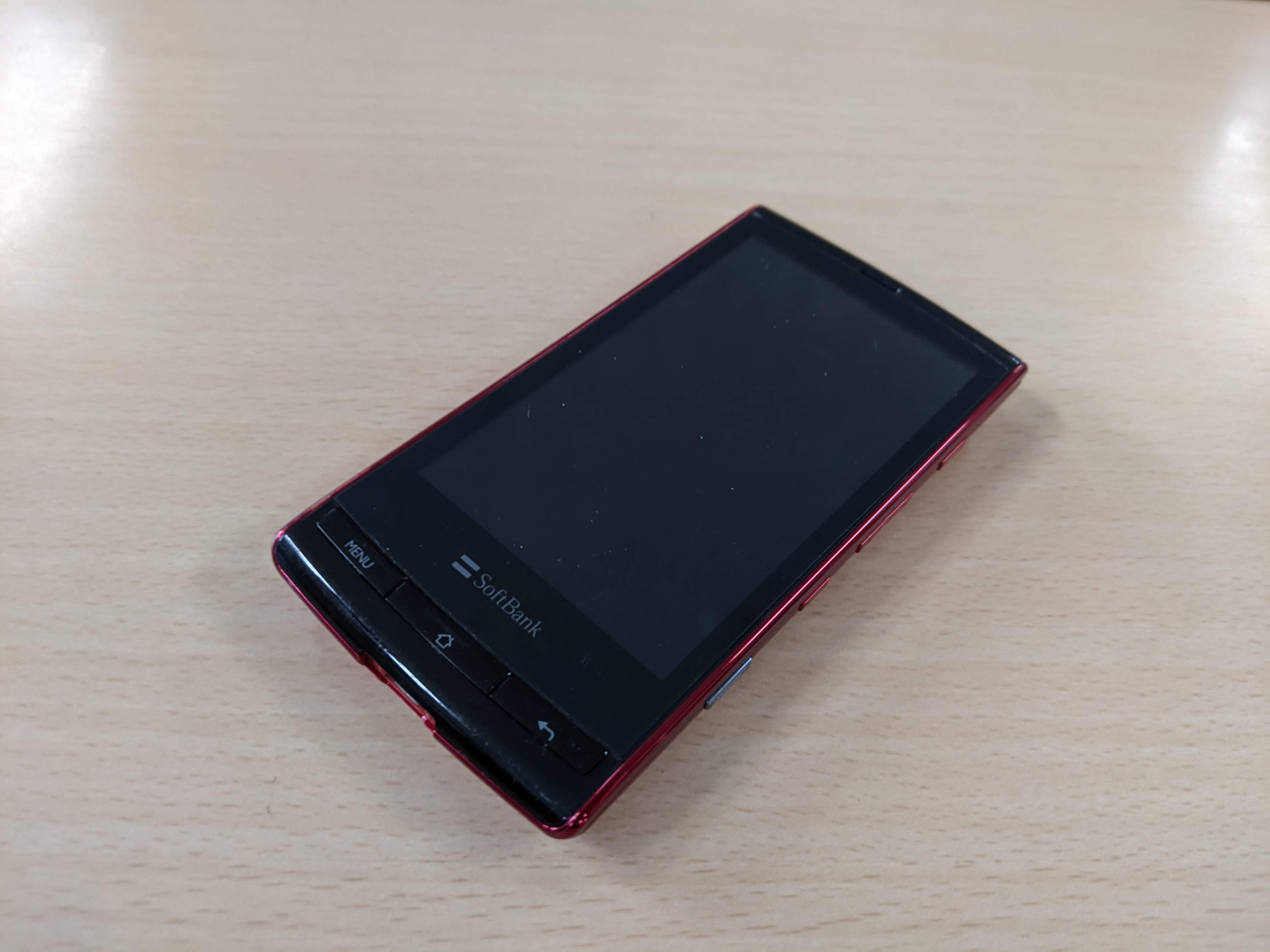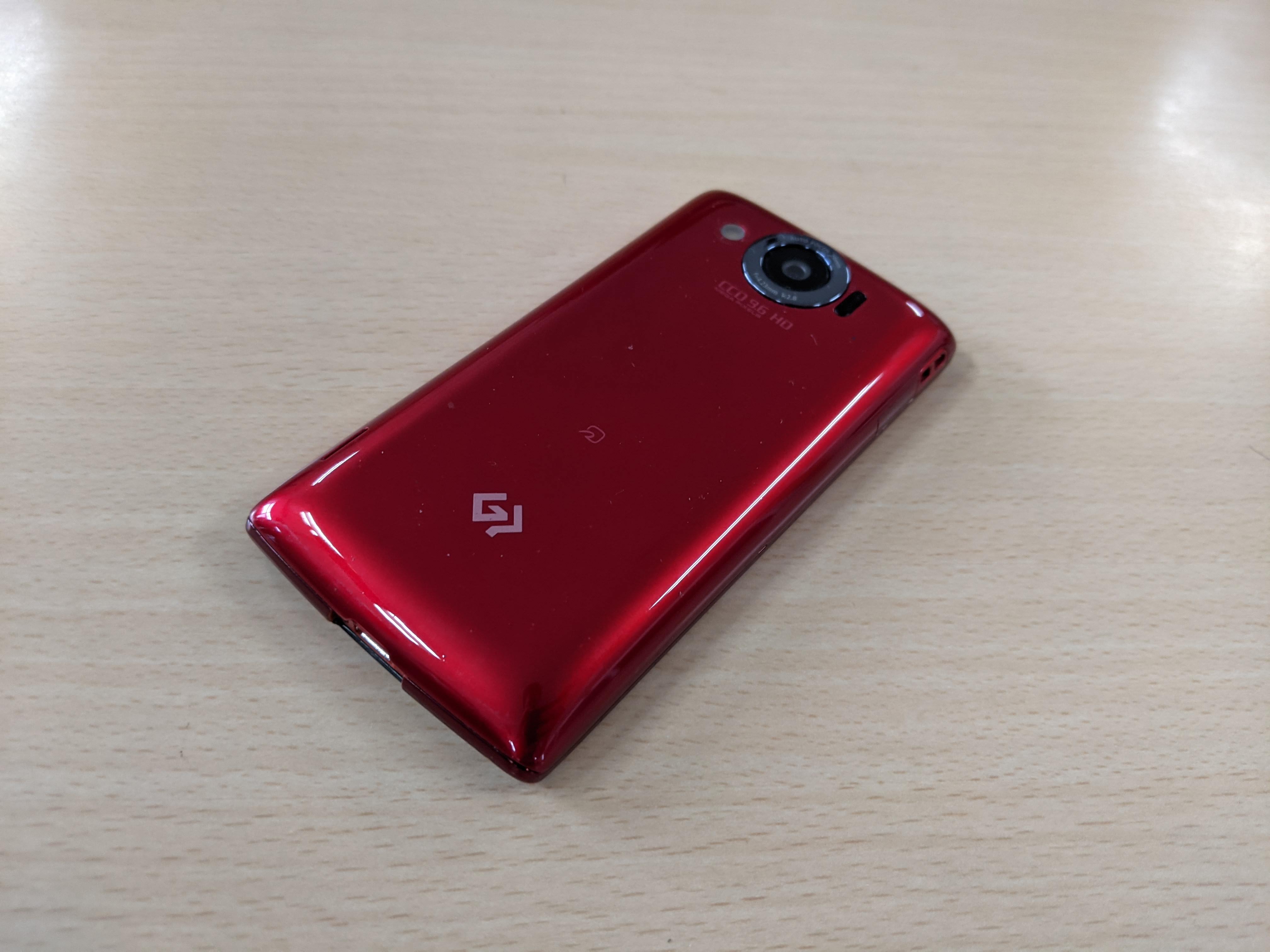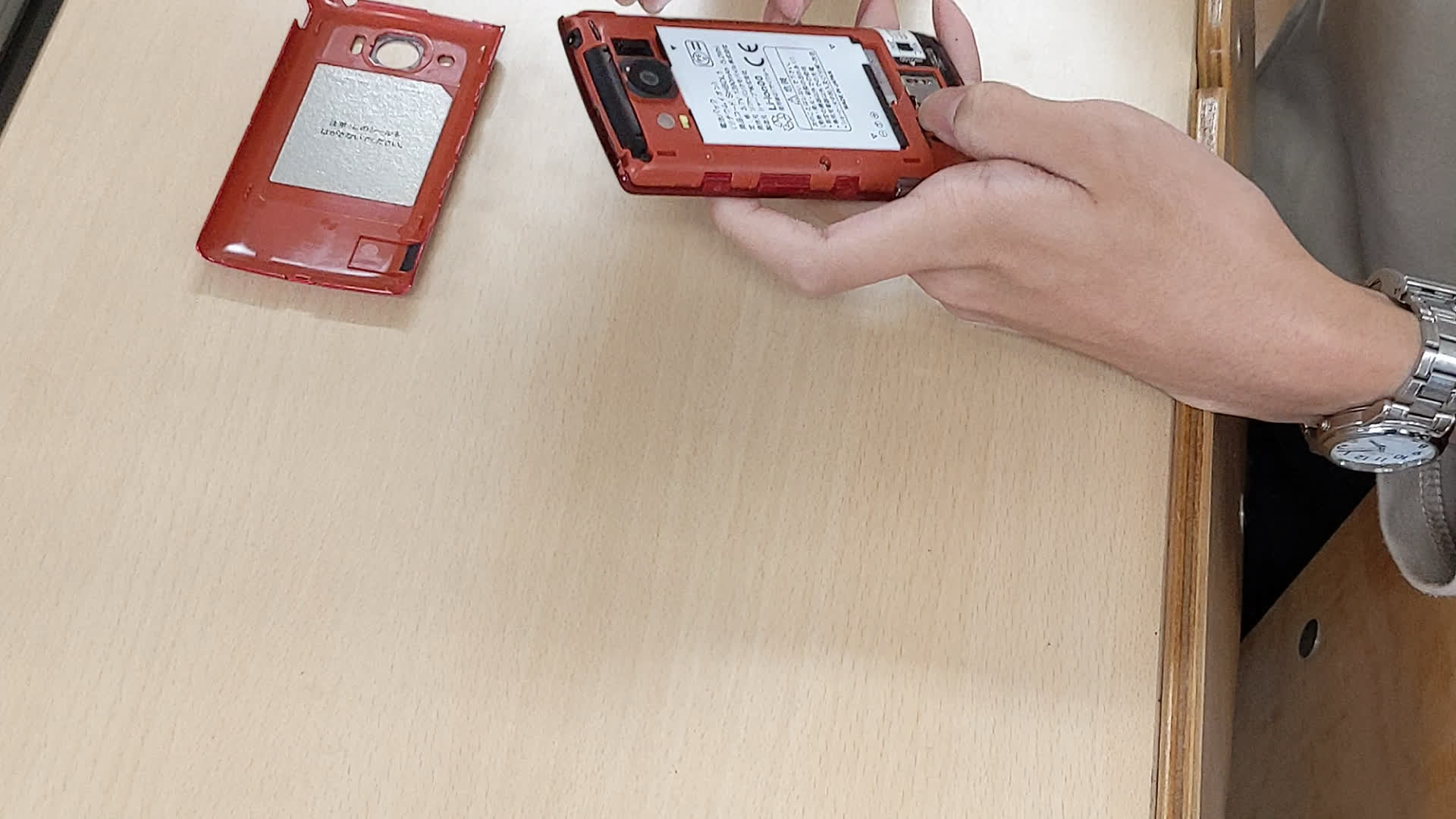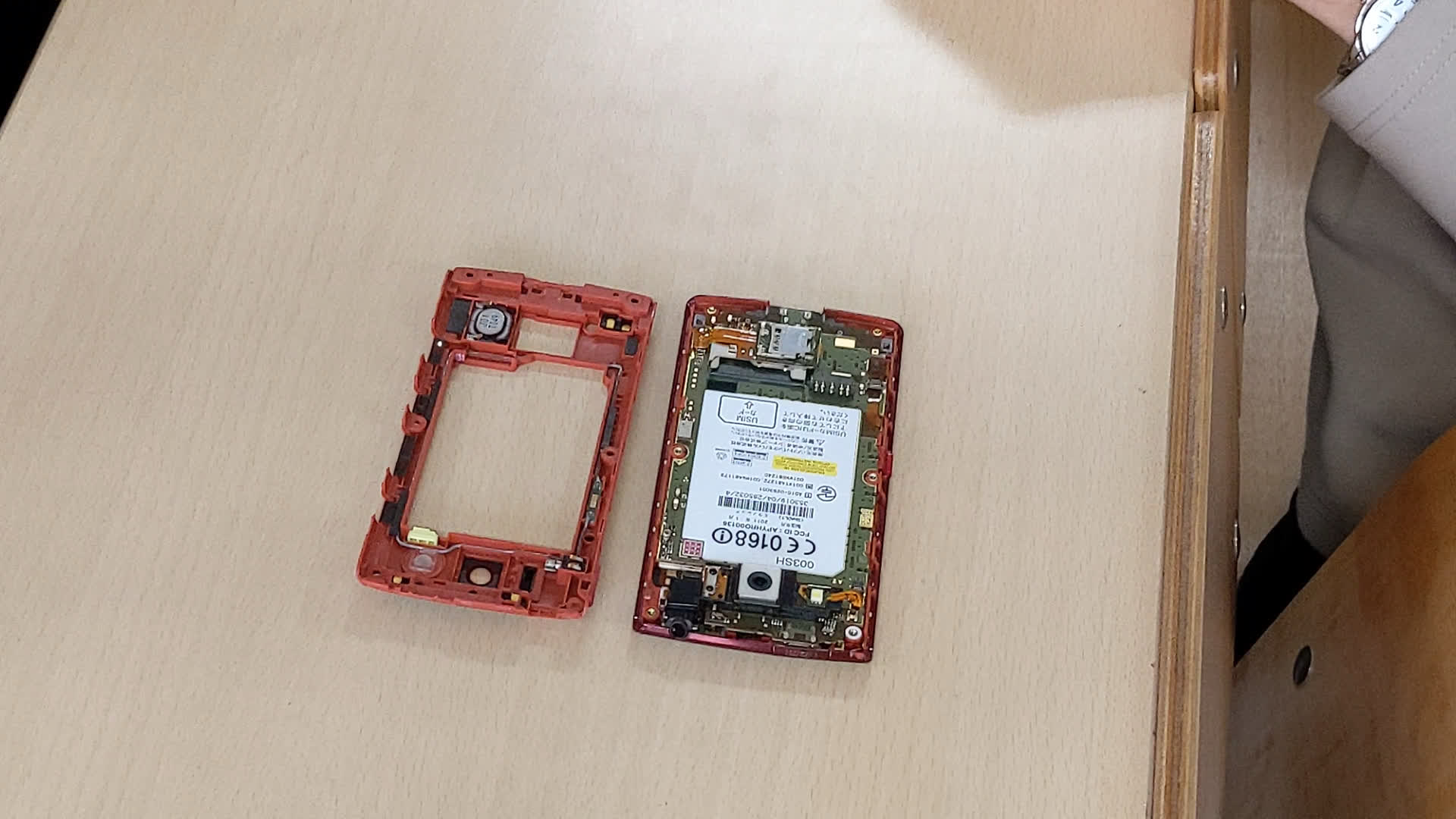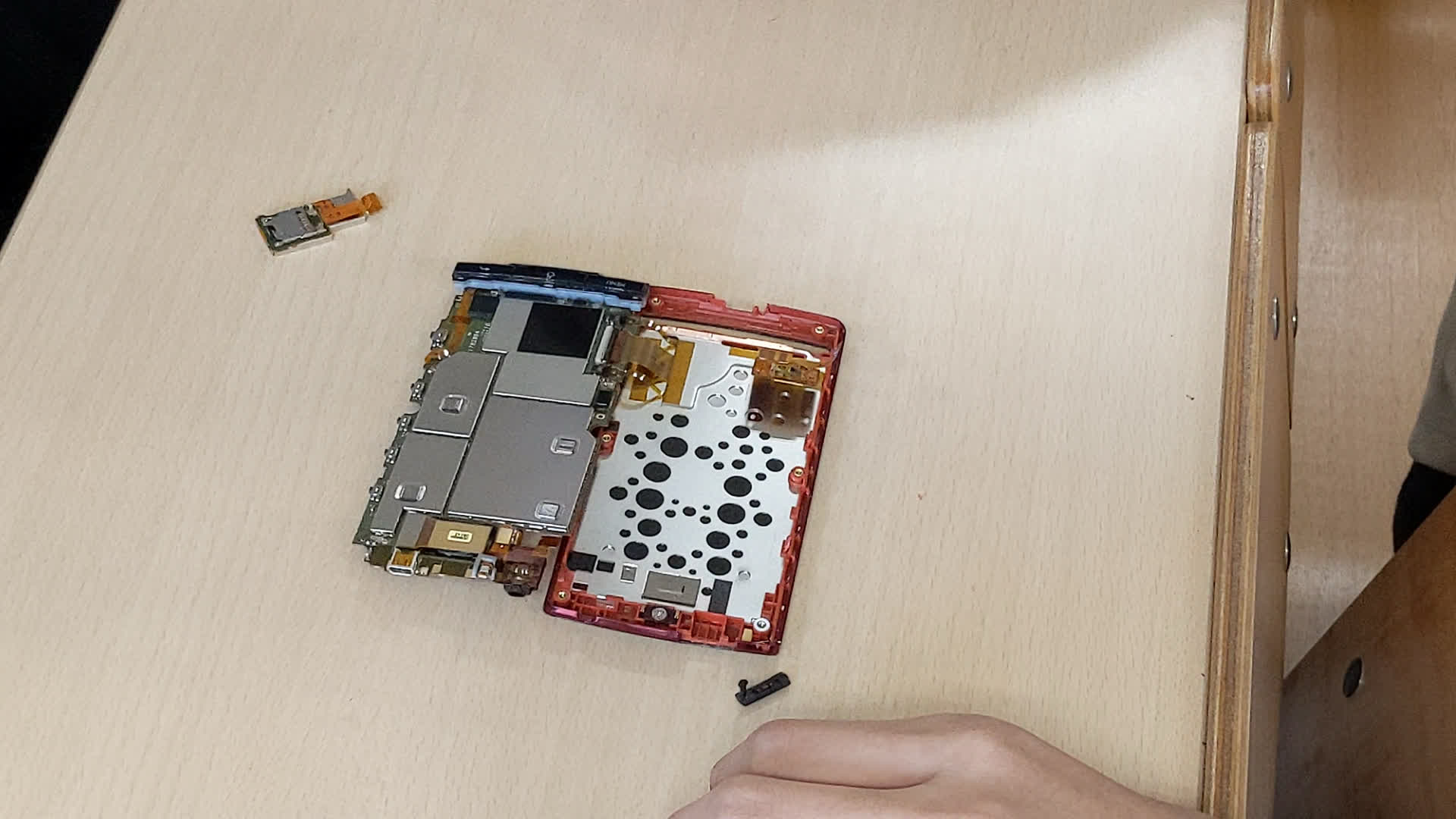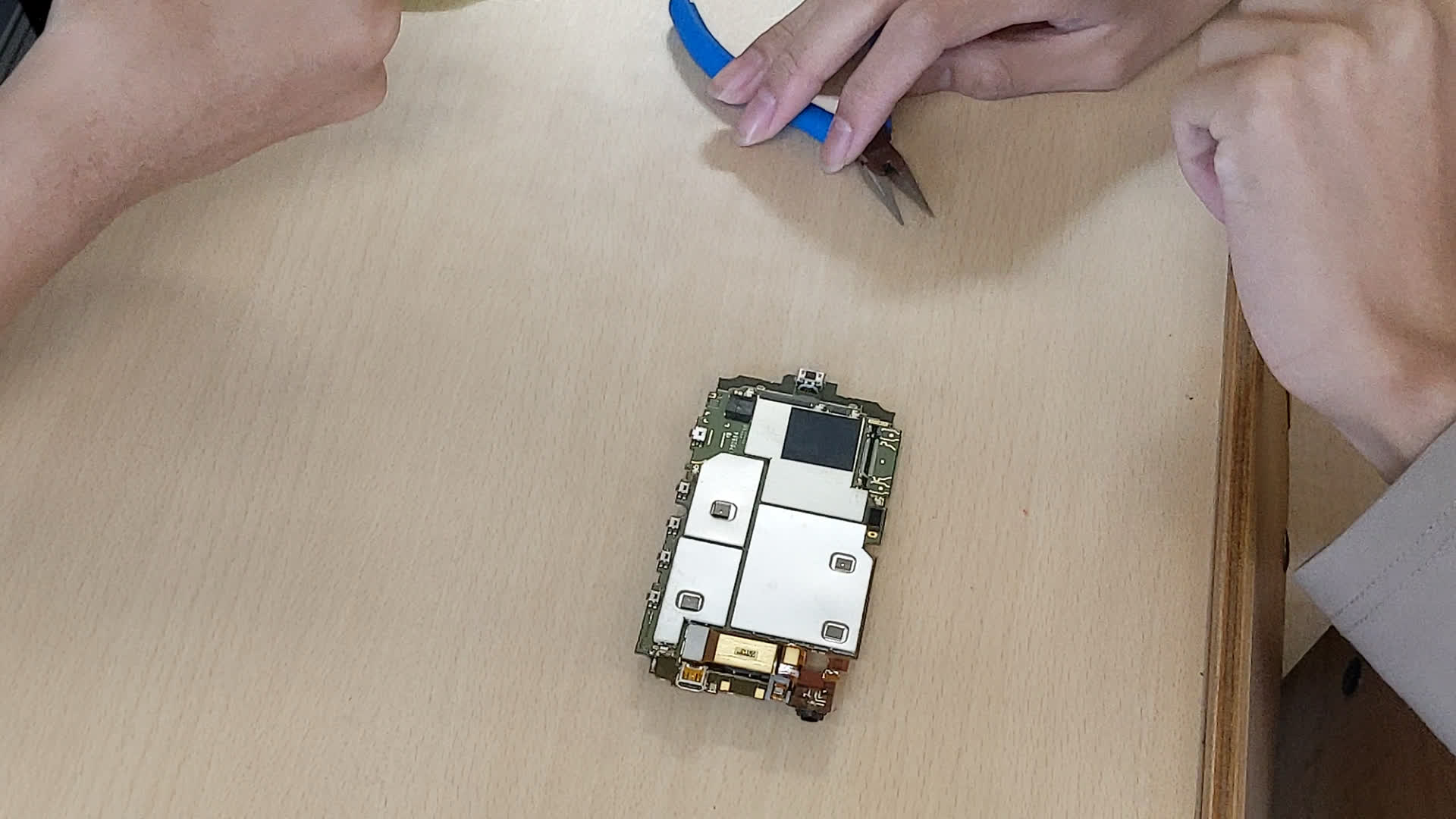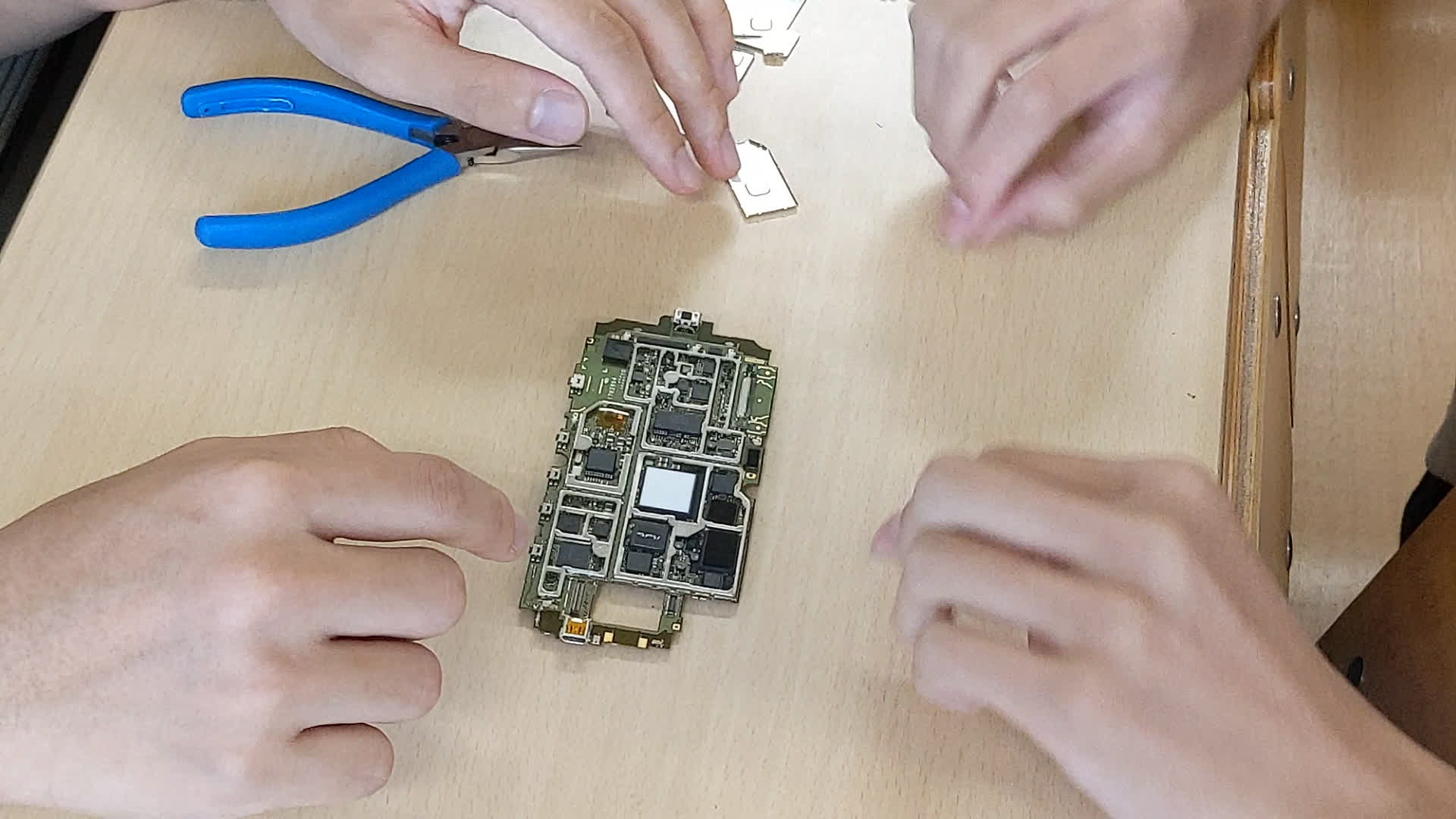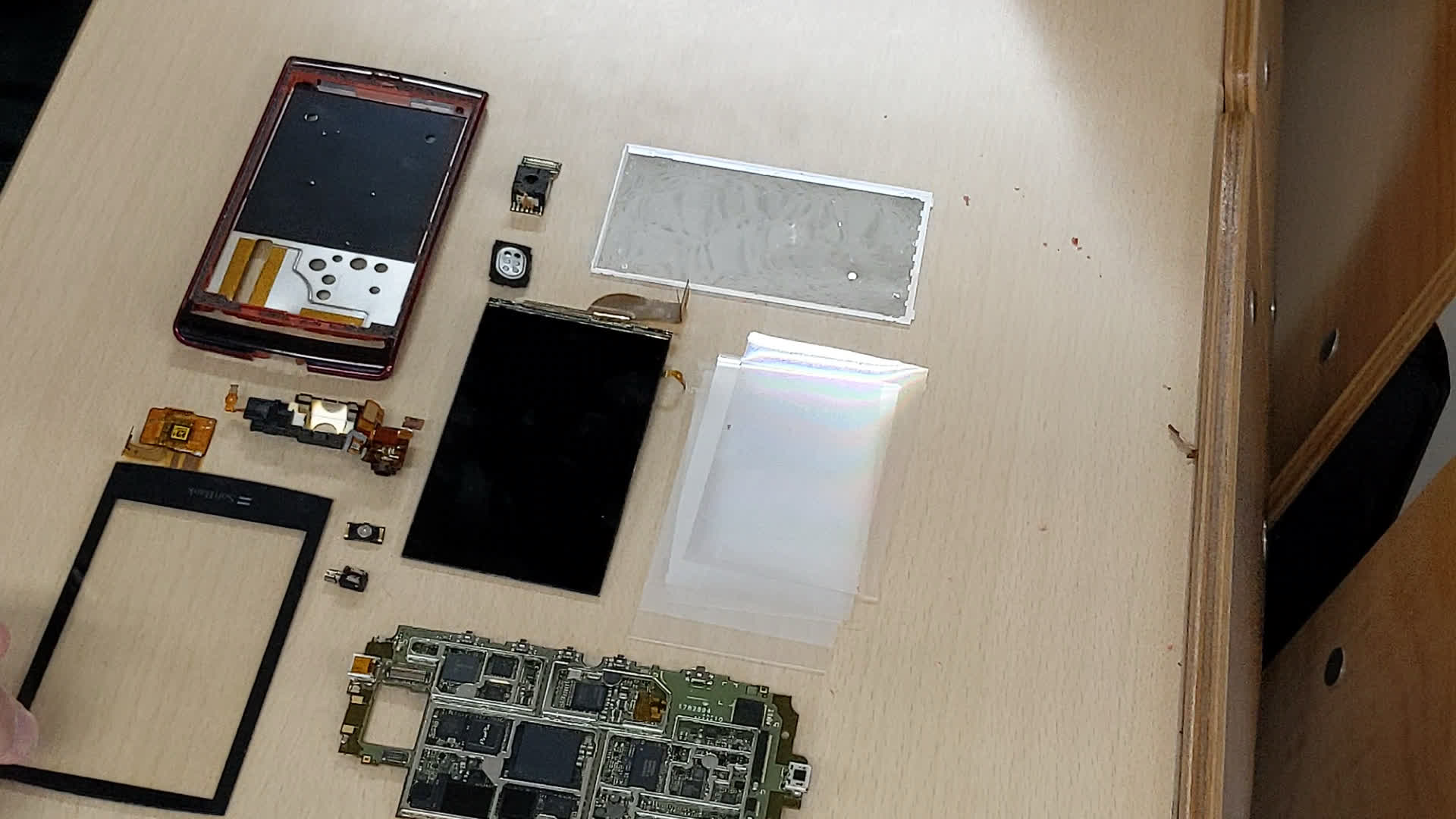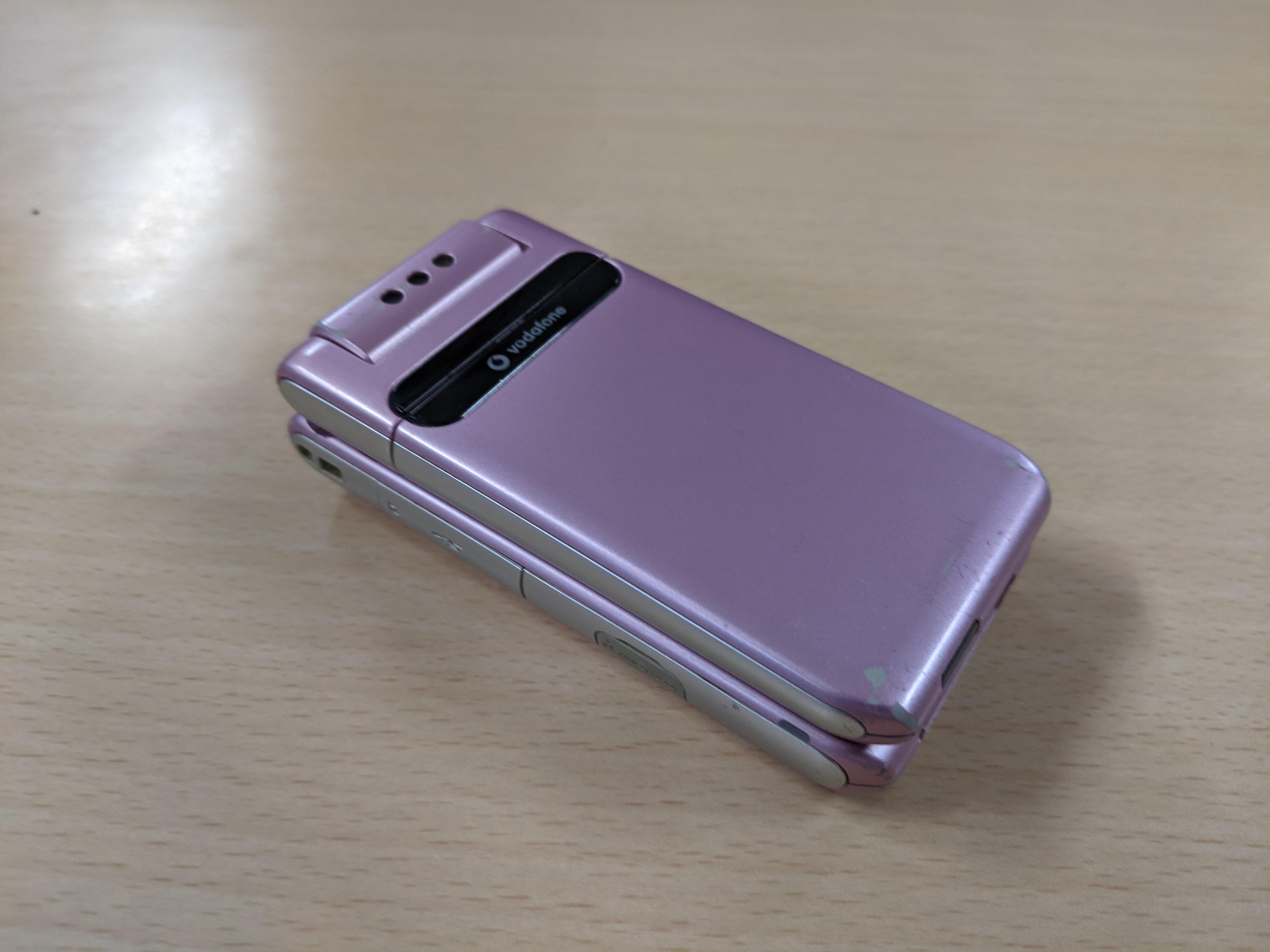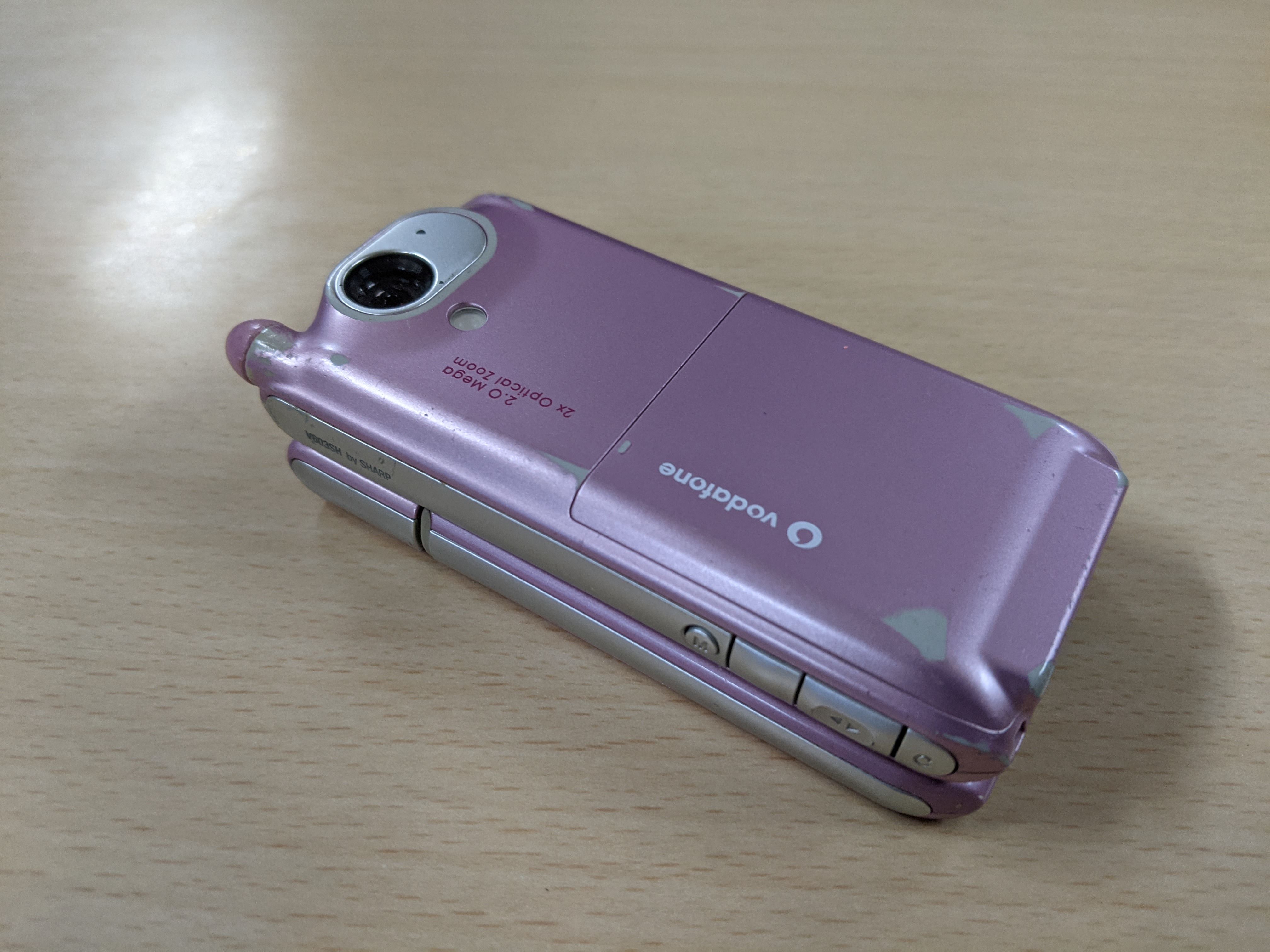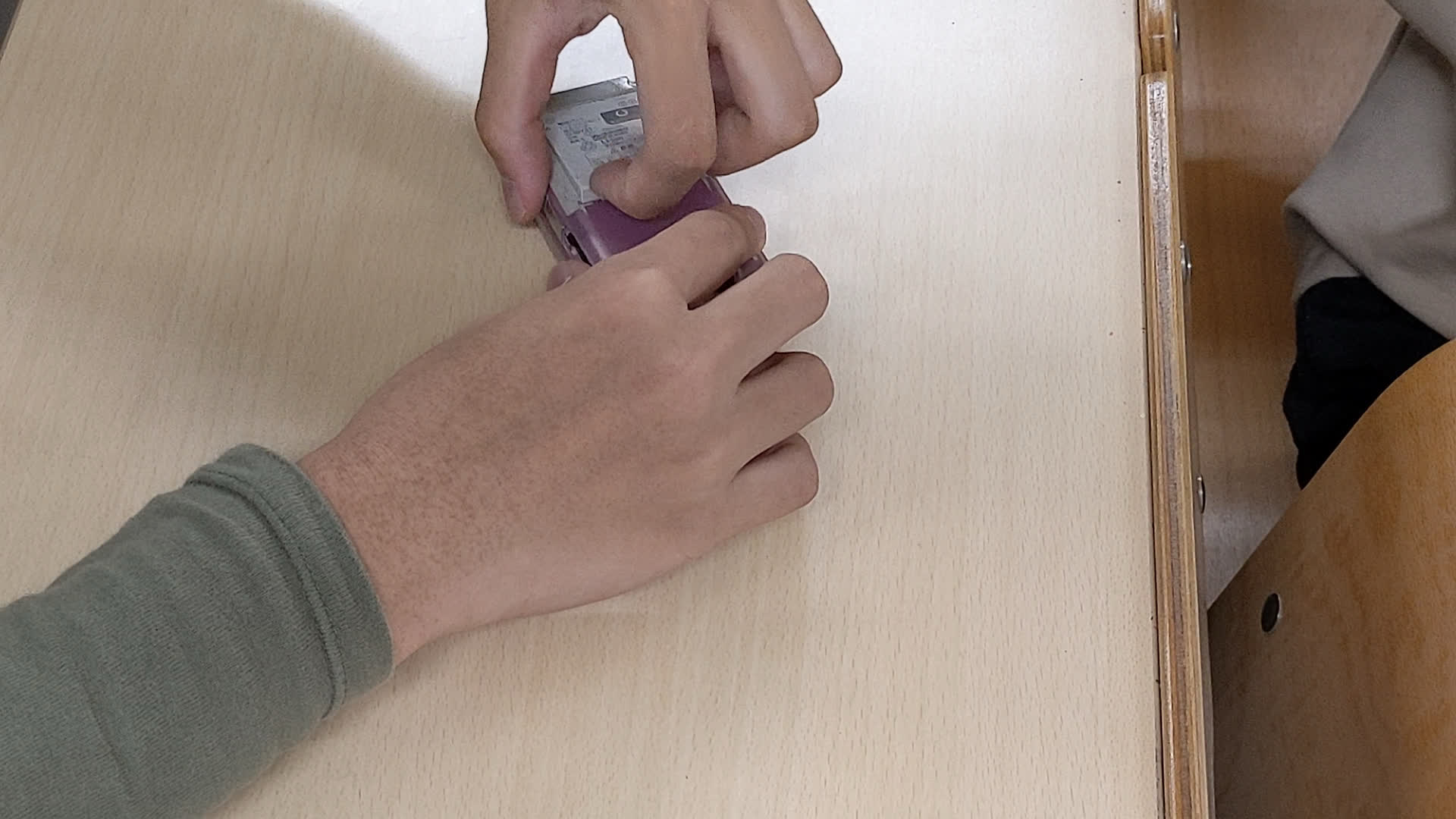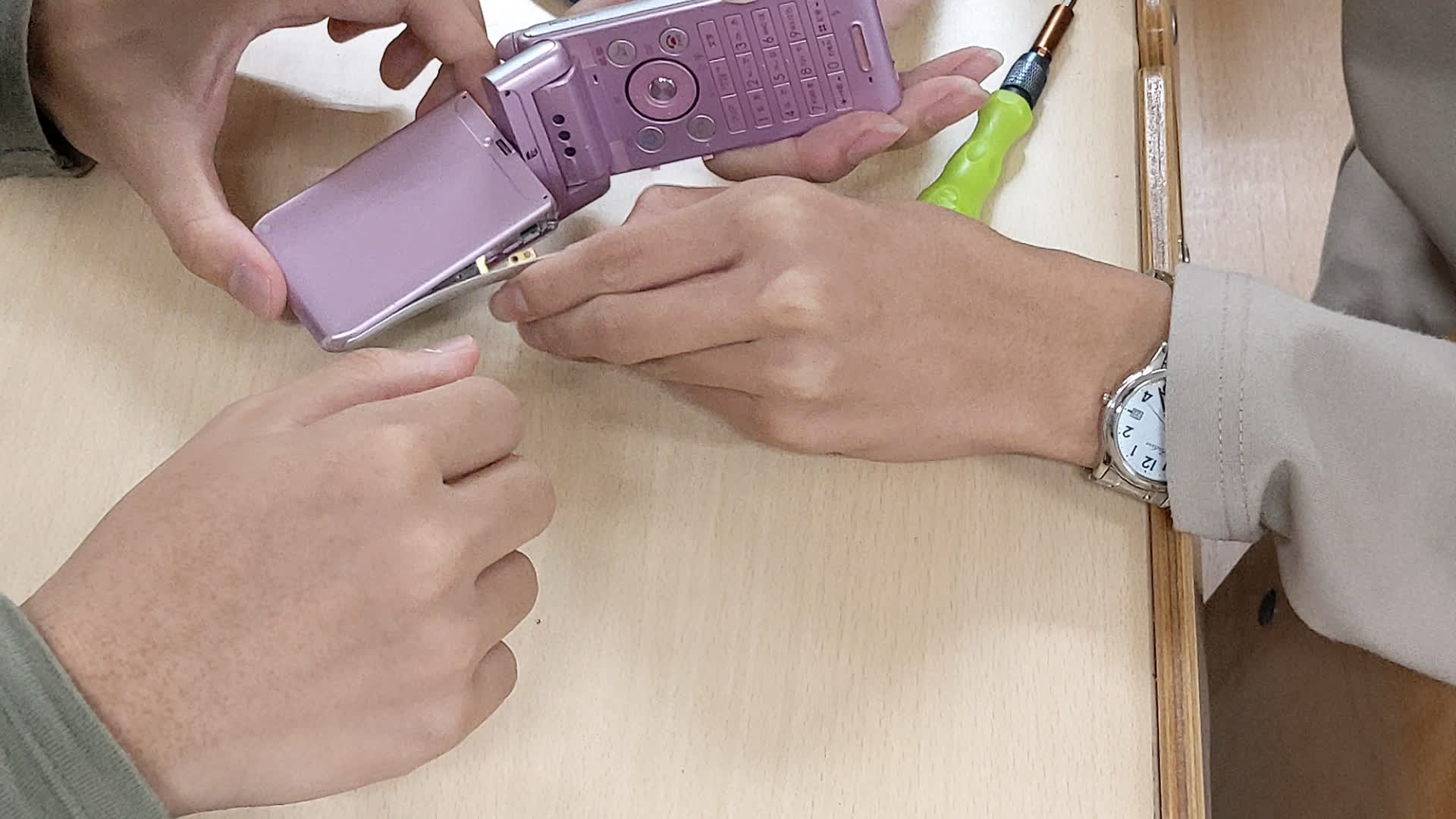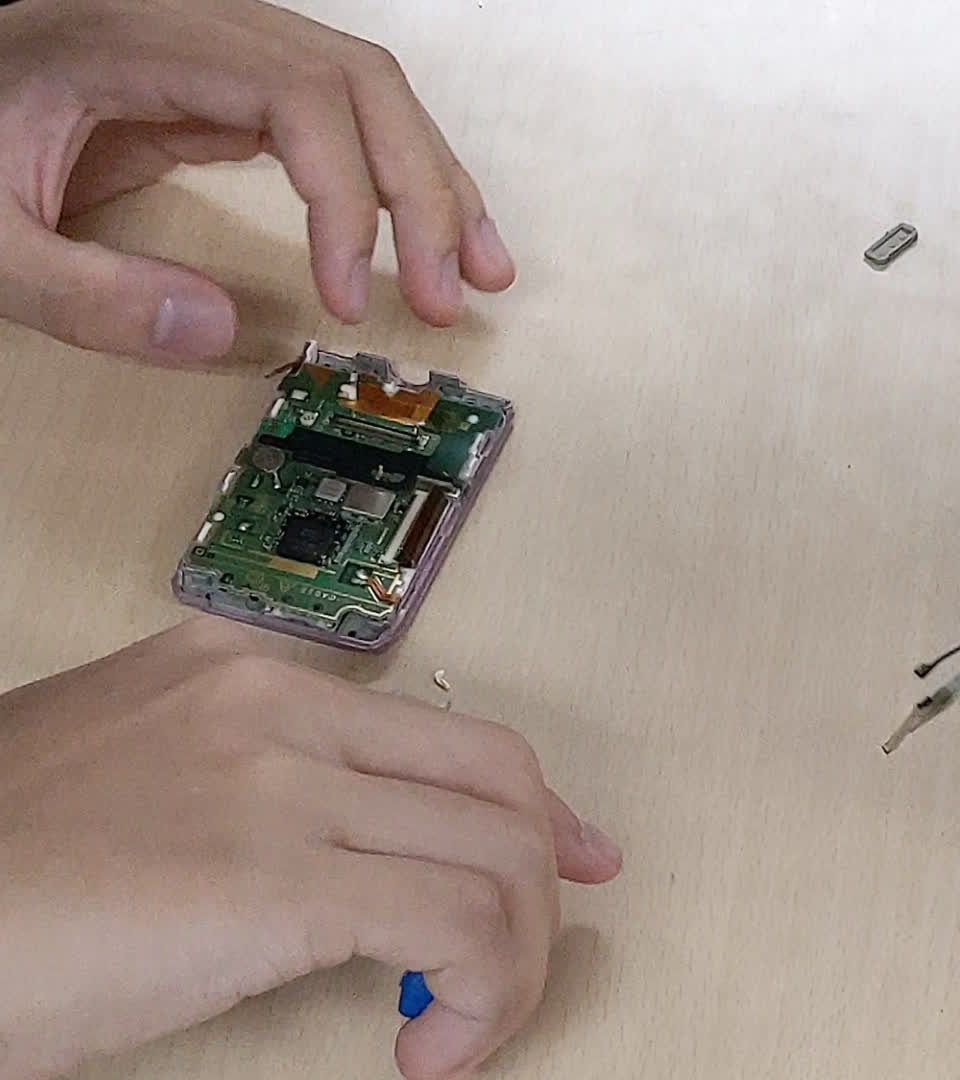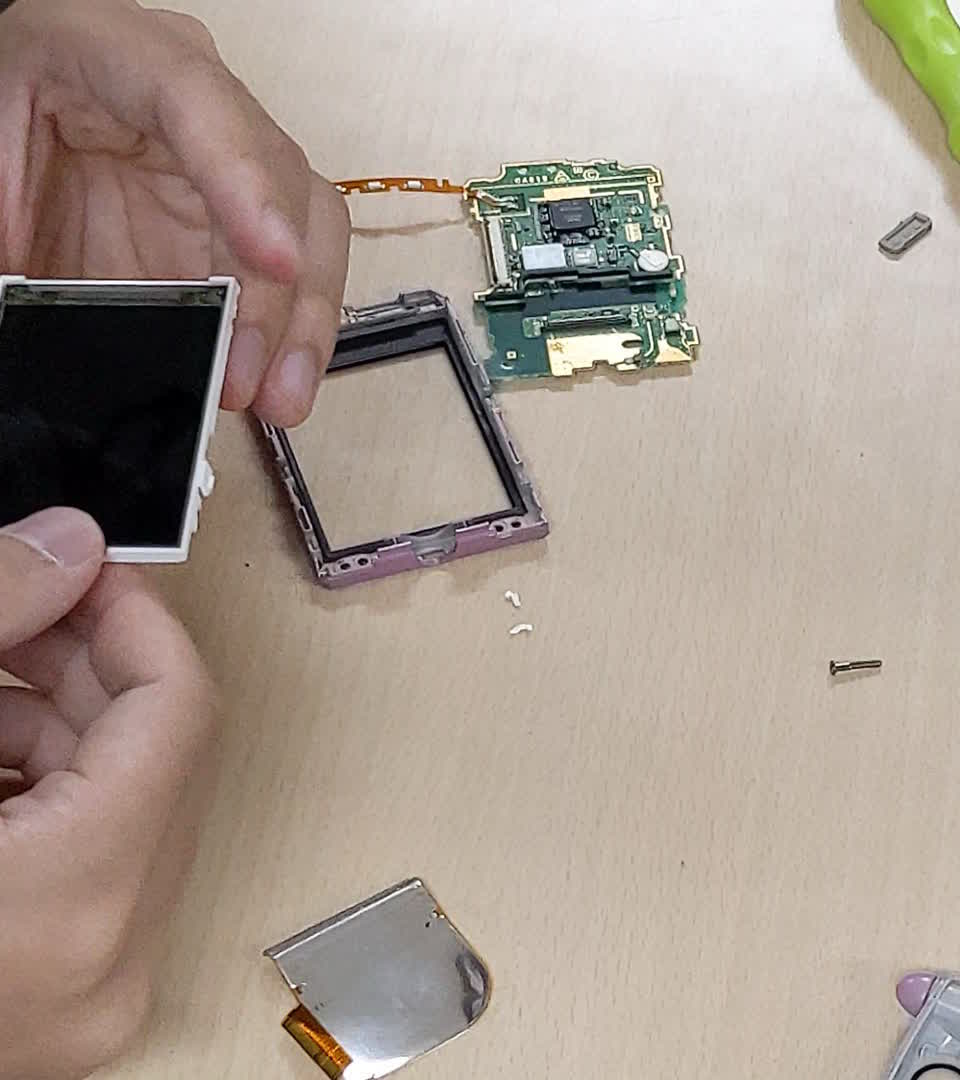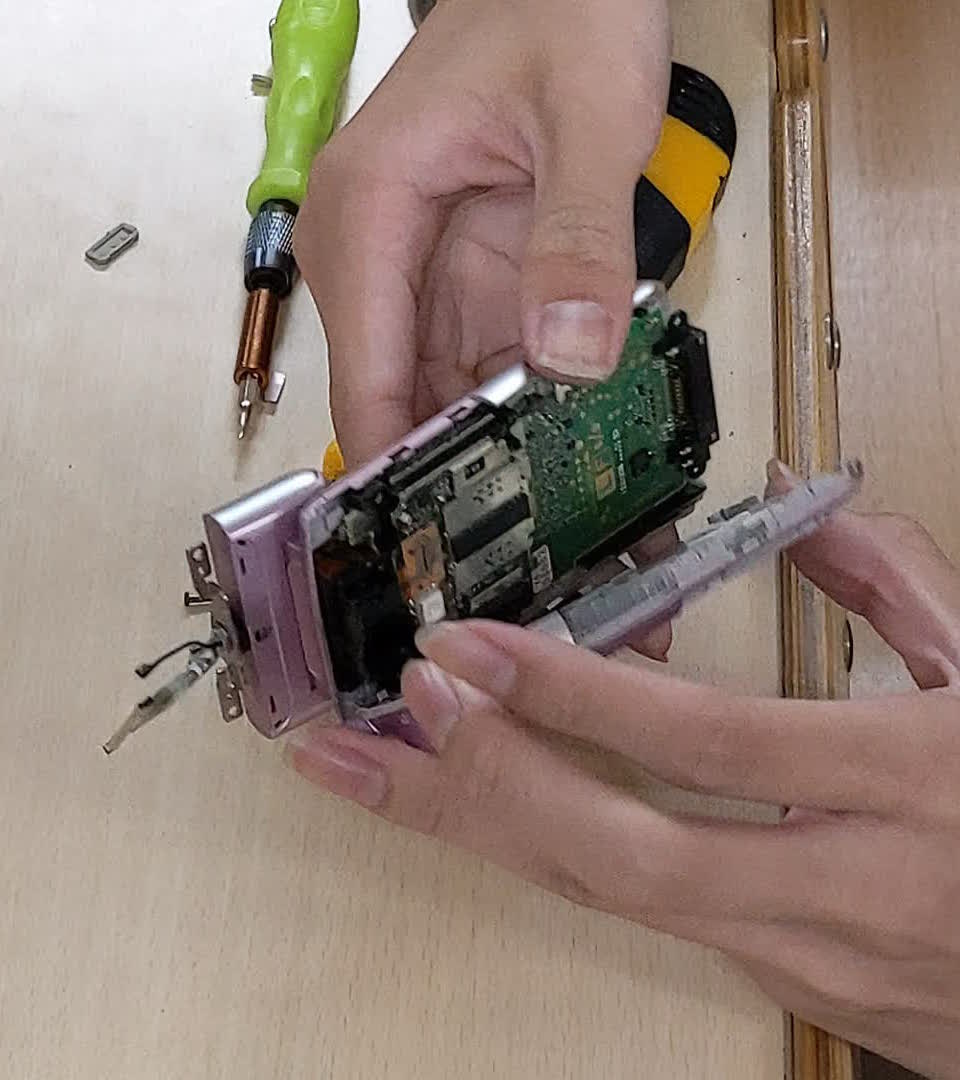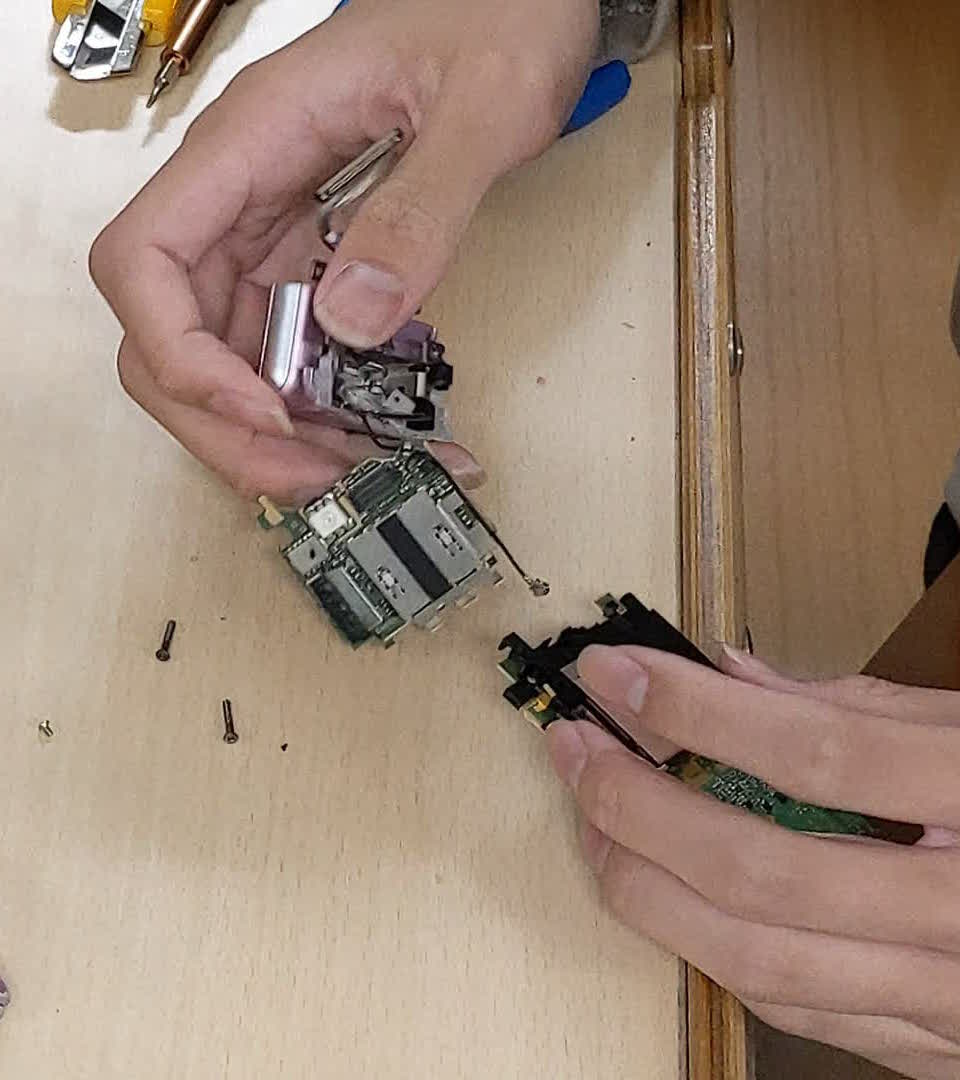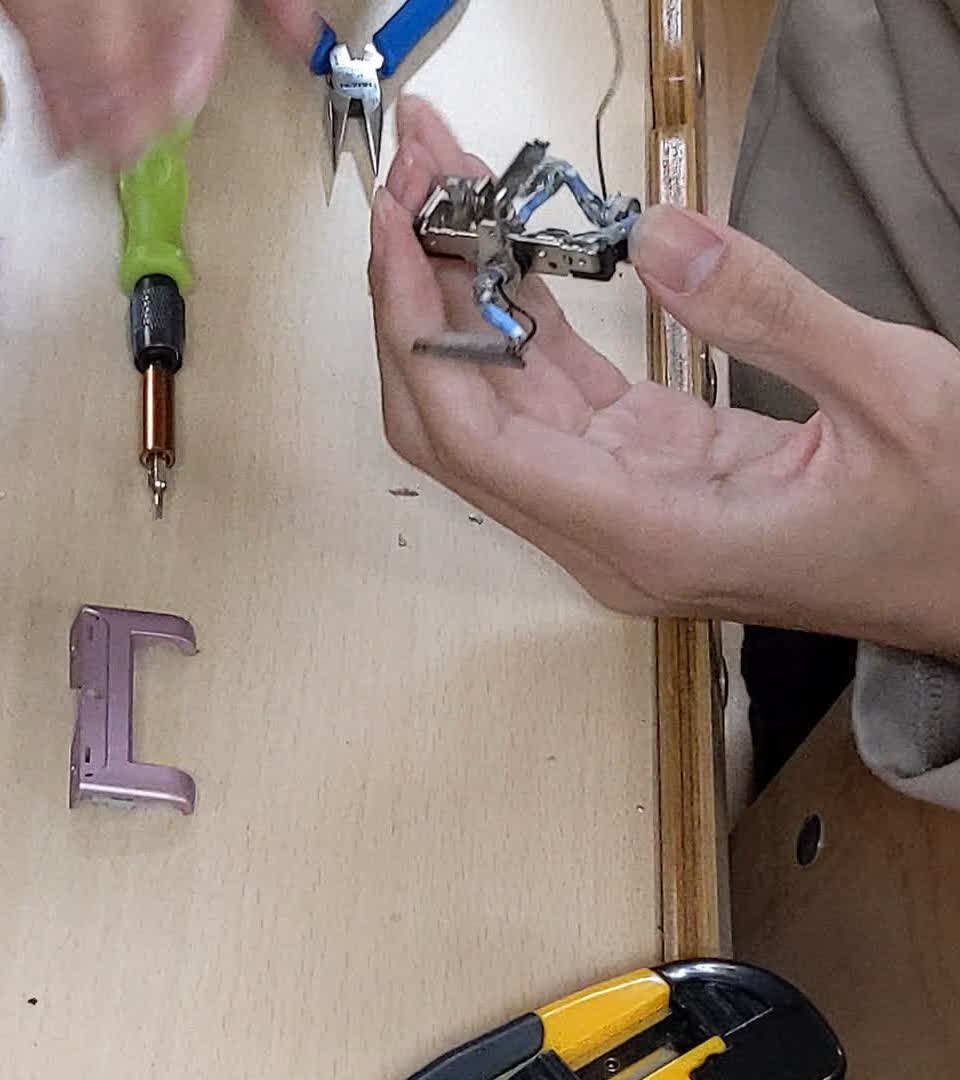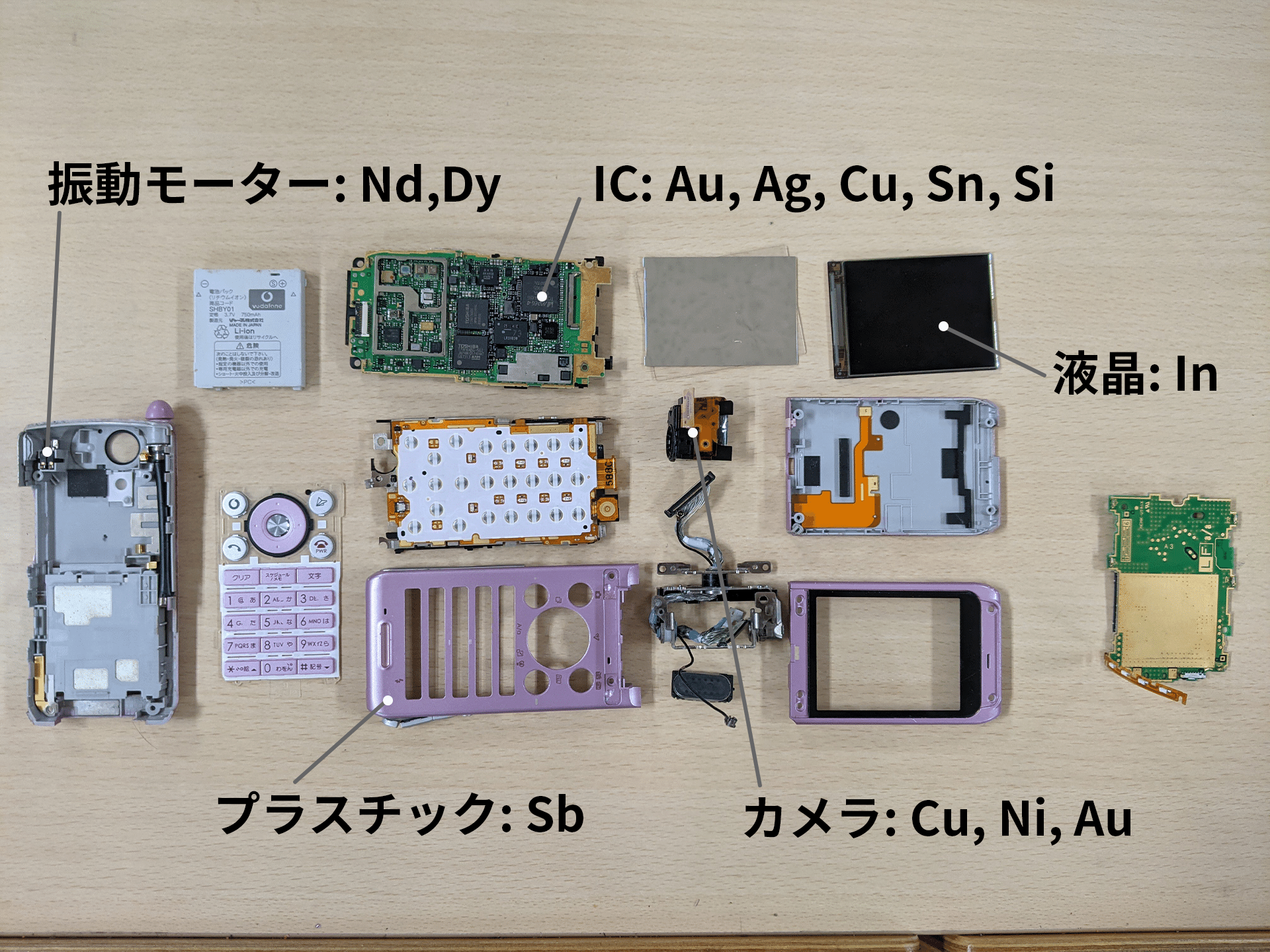携帯解体
2021年10月22日にメンバー1人の家にあったスマートフォンとガラケーを1台ずつ解体しました。
解体の目的
- 携帯電話に金属が含まれていることを体感する
- 携帯電話の構造を確認する
スマートフォン
今回分解するスマホは003SHといって、株式会社SHARPが2010年に製造したものです。
このような古い機器は現在のものよりも部品が外しやすく、分解しやすい傾向があります。 このスマホも同様に、非常に分解しやすい構造になっていました。 まず電源端子のあたりから爪を入れ、裏の板を外します。
ここからSIMカードやSDカードを入れたり、電池を入れ替えたりすることができるので、ここは開けたことのある人もいるかも知れません。 ロックを外して電池を外し、中に入っているSIMカードやSDカードも外しておきます。 ここでいくつかネジが見えているので、特殊なドライバー(今回は五角ドライバー)を使って外します。 すると基板が見えます。
取り外した裏のパネルの方にもスピーカーや振動モーターなどいくつか部品があるので、外しておきます。 基板の縁を止めているプラスチックの小さな爪を潰して外せば、基板を外すことができます。
ディスプレイと繋げているフレキシブルケーブルは、端のコネクタから外せます。 ここからは基板にフレキシブルケーブルでくっついているだけのものが多いので、外してしまいます。 基板についている銀色の部品は放熱板なので、下に爪を入れて剥がすことができます。
放熱板の下にはよく熱を出すICチップが配置されています。 基板に関してはこれ以上分解するのが難しかったので、基板に関してはこれで終わることにしました。 続いては画面です。 画面の表側のスピーカー部からマイナスドライバーなどを差し込むことで、表面のガラスを外せます。 ガラスを取った後、裏側から押すことで、液晶モジュールを取り外せます。 この液晶モジュールは層状になっており、剥がすことができます。 結果、光を複雑に反射させるようなフィルムを数枚と、液晶の本体が取り出せました。
これでスマホの分解は終了です。 最終的に下の写真のような部品に分解することができました。
ガラケー
ガラケーの分解もスマホの分解と似ています(どちらも作られた年代が随分昔であるというのもありますが)。 今回分解するガラケーはV603SHといって、株式会社SHARPが2005年に作ったガラケーです。
ガラケーはスマホとは違い、多くの隠しネジが使用されています。 隠しネジはシールの裏に隠れているので、見えているネジ以外にも、ネジが隠れていそうなシールを見つけ、剥がさなければいけません。 またガラケーは可動部品としてヒンジが使われているのですが、部品がネジでそのヒンジにつながっていて、外すのが難しい場合があります。 それ以外はスマホの分解と似ているので、所々割愛しようと思います。 まず電池やSIMカードを外しておきます。
そして次に隠しネジを外さないといけません。 写真の黒い部分がシールになっていて、その下にネジが埋まっています。 カッターなどを差し込むと剥がれてネジが露出するのでドライバーで外していきます。 画面の横にある銀色の部品も外れました。
画面上部にもネジがあったので外すと、画面の本体を外すことができます。 ここで基盤についているネジを外すことで、本体が上半分と下半分の2つに分かれます。 ※この時点で上半分は画面が外されているのでただの基板に見えます。
画面の基板にも多くのフレキシブルケーブルが使われているので、一つ一つ外すと、基盤が取り外せます。 基板の裏には、スマホの時と同じような液晶ユニットがあり、同じようにフィルムや液晶に分解できました。
続いて、下半分の分解に移ります。 ネジを外すことで、キーボードの部分が半分に割れます。
ここにも基板があり、基盤とプラスチックの間からキーボードに使われていたゴムのフィルムが取り出せます。 これが沈み込んで基板に電気が通るようにすることでボタンとして動作しているのです。 ガラケーの基板はスマホのものと異なり、横のボタンを実現するために、基板が3次元状に組まれています。 これもフレキシブルケーブルを外していくことで、基盤とヒンジを分離できます。
ここにもやっぱりネジが隠されているので、それを外してプラスチック部分を取り外します。 これで金属の塊のようなヒンジを取り外すことができます。
これでガラケーの分解が終了です。 最終的に下の写真のような部品が取り出せました。
解体を通して感じたこと
普段はガラケーやスマホの解体などまずしないので、それ自体が楽しかったのですが、もちろんいろいろ学ぶことがありました。
いつも使っているスマートフォンは(個人的な見解ですが)ただのガラス板のようにしか見えないので、中には基板くらいしかないかなと思っていたのですが、実際に中を開けてみたら、基板以外にも金属部品やフレキシブルケーブルなど、想像していたよりもさまざまな種類の部品が使われていることが確認でき、とても驚きました。
また、携帯を解体するのに特殊な五角形のドライバーが必要であったり、慣れていなかったということもあったと思いますが、解体し終えるのに2時間以上かかったりしたことから、簡単に分解できないようになっていることを実感したうえに、
この分解のしにくさから機械解体が難しくなってしまい、コスト問題につながっているのかとも思い知らされました。
なお、ここで分解した廃電子機器は資料としてコンテストが終わるまで持っておき、コンテスト終了後に組み立てなおし回収ボックスにチームで出しに行く予定です。
Cell Phone Dismantling
On October 22, 2021, we dismantled one smartphone and one cell phone of a team member.
Purpose of Dismantling
- Experience the presence of metals in cell phones
- Confirm a structure of cell phones
Smartphone
The smartphone we are going to take apart is called 003SH, which was manufactured by SHARP Corporation in 2010.
These older devices tend to be easier to dismantle than modern ones as the parts can be more easily removed. In the same way, this smartphone had a very easy structure to disassemble. First, insert your fingernails from around the power terminal and remove the back plate.
You may have opened it before, because it is where you can insert the SIM card or SD card and replace the battery. Release the lock, remove the battery, and the SIM card and SD card inside. You can see some screws, so use a special screwdriver (pentagonal screwdriver in this case) to remove them. Then you can see the circuit board.
Because there are several components such as speakers and vibration motors on the back panel, remove them as well. You can remove the board by crushing and removing the small plastic projection that holds the edge of the board.
The flexible cable that is connected to the display can be removed from the connector of the end and most of it is just attached to the board, so remove it from here. The silver parts attached to the board are heat sinks, which can be removed by inserting your fingernail under them.
Under the heat sink, there is often an IC chip that generates heat. It was difficult to disassemble the board any more, so we decided to finish with the board. Next, we dismantled the screen. By inserting a flathead screwdriver from the speaker area on the front side of it, you can remove the surface glass. After removing the glass, the LCD module can be removed by pushing from the back side. It is layered and can be peeled off. As a result, we were able to remove several pieces of film that reflect light in complex ways, as well as the main body of the LCD.
This is the end of dismantling the smartphone. Finally, we were able to dismantle it into parts as shown in the picture below.
Feature Phone
Dismantling a feature phone is similar to that of a smartphone (although both were made a long time ago). The phone we are going to take apart is called V603SH, which was made by SHARP Corporation in 2005.
Unlike smartphones, there are many hidden screws in feature phones. They are hidden behind stickers, so in addition to the visible screws, you have to find the stickers where the screws might be hidden and remove them. Also, feature phones have hinges as moving parts, and the parts are connected to those hinges by screws, which make it difficult to be taken off. Other than that, it is similar to disassembling a smartphone, so we will omit to explain about some parts. First, remove the battery and SIM card.
Next, we need to remove the hidden screws. The black part in the picture below is a sticker, and the screws are inside it. When you insert a cutter, it will peel off and reveal the screws, so you can use a screwdriver to remove them. The silver parts next to the screen also came off.
There was also a screw at the top of the screen, so removing it allowed you to remove the main body of the screen. By removing the screws on the base, it can be divided into two halves, the top half and the bottom half. *At this point, the top half looks like just a circuit board since the screen has been removed.
Many flexible cables are also contained in the screen's circuit board, so by removing them one by one, the base can be removed. Behind the circuit board, there is the LCD unit, which could be dismantled into film and LCD in the same way as the smartphone.
Next, we move on to disassemble the bottom half. Removing the screws, the keyboard part splits in half.
There is also a circuit board here, and the rubber film used for the keyboard can be removed from between the base and plastic. It sinks in and allows electricity to pass through the circuit board, which is what makes it work as a button. Unlike that of a smartphone, the circuit board of a feature phone is assembled in a three-dimensional shape in order to make buttons on the side work. This can be separated into the circuit board and the hinge by removing the flexible cable as well.
There is still a screw hidden here, so remove it and remove plastic. Then, the hinge, which looks like a mass of metal, can be removed.
This is the end of dismantling the feature phone. Eventually, we were able to remove the parts as shown in the picture below.
Thought over Dismantling
We do not usually dismantle a feature phone or a smartphone, so that itself was a fun thing to do, but of course we learned a lot from it. Smartphones that we use in our daily lives look like just a glass plate (in our opinions), so we thought there would be nothing inside but circuit boards, but when we actually did, we were very surprised to see that there were more different types of parts used than we had imagined, such as metal parts and flexible cables, in addition to circuit boards. In addition to that, we needed a special pentagonal screwdriver to dismantle phones, and although we were not used to it, it took us more than two hours to finish dismantling it, which made us realize that they were not easy to dismantle. We are planning to keep the disassembled waste electronic devices as reference materials until the end of the web contest, and after that, we will take a recovery box to reassemble them.
